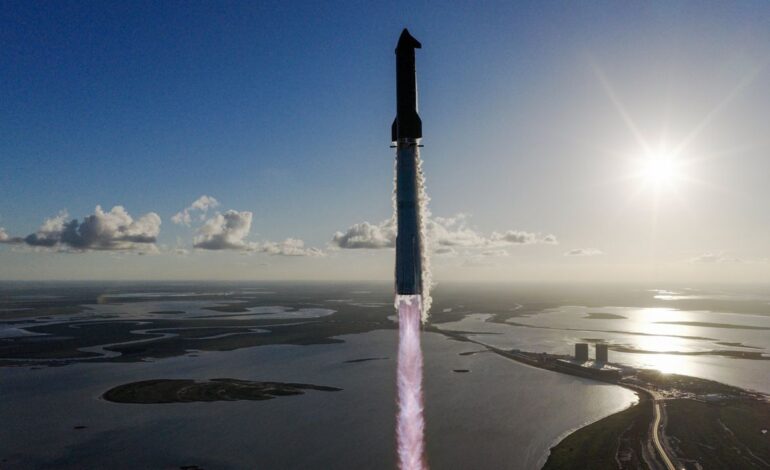SpaceX Launches Starship Flight 11, Prepares for Next Iteration

SpaceX successfully launched the 11th test flight of its Starship megarocket on October 13, 2023, from its Starbase site in South Texas. This launch marked a significant milestone for the company, as the 403-foot-tall (124 meters) rocket achieved a complete suborbital flight, showcasing the effectiveness of both the Super Heavy booster and the Starship upper stage, which returned to Earth for precise splashdowns.
This flight was particularly noteworthy, not only for its success but also as it concluded the operational phase of the vehicle’s “Version 2” variant. SpaceX announced in a wrap-up post that attention will now shift to the next generation of Starship, including multiple vehicles currently in production and preparing for testing. The upcoming iteration, referred to as Starship Version 3, will be taller and equipped with significant upgrades to enhance its operational capabilities.
Future Enhancements for Starship
Starship Version 3 will be approximately 5 feet (1.5 meters) taller than its predecessor, maintaining a similar appearance while introducing substantial technical improvements. According to SpaceX spokesperson Dan Huot, the propulsion system has been reengineered to accommodate the new Raptor 3 engines, which are expected to deliver enhanced performance. The Super Heavy booster will continue to house 33 Raptors, while the Ship will utilize six Raptor engines.
Huot emphasized that Version 3 will also feature upgrades in energy storage and avionics, essential for enabling longer-duration missions. A key development will be the introduction of new docking adapters intended for in-space propellant transfer, crucial for deep-space missions. This capability allows Starship upper stages bound for the Moon or Mars to launch with minimal fuel, requiring them to rendezvous with tanker ships for refueling in Earth orbit.
The Super Heavy booster will also see improvements, including a redesigned fuel transfer tube that will facilitate the flow of cryogenic liquid methane and liquid oxygen to the Raptor engines. Huot noted that the booster will incorporate an integrated hot stage, allowing the Ship’s engines to ignite before complete separation from the booster, enhancing flight efficiency.
Innovations in Landing and Launch Infrastructure
In an effort to improve landing precision, the Version 3 Super Heavy will be equipped with just three grid fins, reduced from four, but significantly larger and more robust. These fins will assist in both guidance during descent and in the vehicle’s lift capabilities upon reentry. SpaceX’s launch tower will also play a pivotal role in recovering the vehicles post-launch, utilizing “chopstick” arms to catch them as they return to Earth.
Following the success of the Flight 11 launch, SpaceX plans to overhaul the existing launch pad at Starbase to accommodate Starship Version 3. Lead propulsion engineer Jake Berkowitz stated that changes will include the installation of a new orbital launch mount and upgrades to the flame trench system, which are set to enhance future launch operations. In the interim, launches will be conducted from Pad 2, which will soon be operational.
Looking ahead, Starship Version 3 is poised for ambitious missions, potentially including flights to Mars as early as next year. Elon Musk, founder and CEO of SpaceX, has indicated that the company aims to launch a fleet of uncrewed Starships to the Red Planet during the upcoming launch window in late 2026, when Earth and Mars align favorably for interplanetary travel.
Further down the line, SpaceX has plans for an even more powerful Starship, designated Version 4, which will measure 466 feet (142 meters) tall and utilize 42 Raptor engines. Musk has projected that this iteration could debut in 2027, coinciding with NASA’s anticipated Artemis 3 mission, which aims to land astronauts on the Moon for the first time since the Apollo program.
As SpaceX continues to push the boundaries of space exploration, the advancements in the Starship program not only represent technological progress but also signify a pivotal moment in the journey toward establishing a human presence on Mars and beyond.






